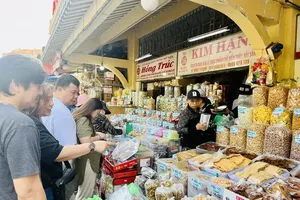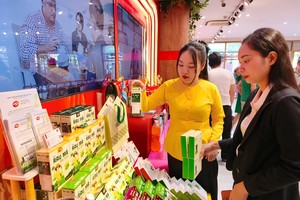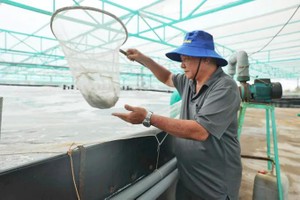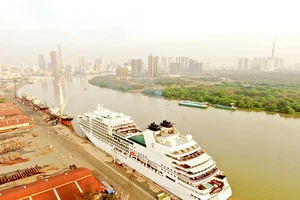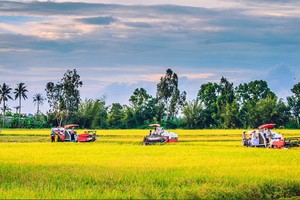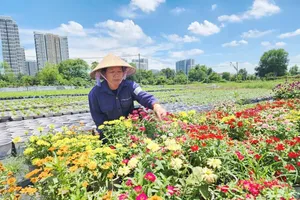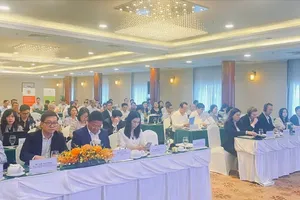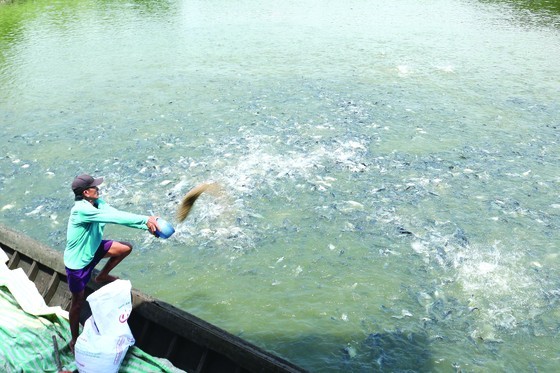 |
Pangasius farmers are worrying about increased feed prices |
For the past month, the price of pangasius feed has continuously increased, and farmers are facing the risk of loss.
By the end of 2022, seafood export turnover will reach US$11 billion, bringing Vietnam into the top three seafood exporting countries in the world. Being one of the top rice exporters in the world, Vietnam is considered a country with strengths in agriculture; the Mekong Delta – which is known as the country’s rice bowl and seafood bowl – plays a very important role. Therefore, people hope that the domestic animal and aqua feed production industry will soon grow with the output of export products.
When pig farmers stopped using by-products such as mixing bran (leftover) with banana stalks as feed for pigs, it is also a time to mark their dependence on processing industrial feed. Small-scale farming gradually disappeared, giving way to large farming to meet the needs of the market. This is also the general development of livestock, poultry and aquaculture industries.
Dong Thap and An Giang provinces in the Mekong Delta are considered cradles for raising pangasius and basa fish for export throughout the country. An Nhon commune, Chau Thanh district, Dong Thap province has 170ha of water surface area for raising catfish (pangasius) with an annual harvest of 45,000-50,000 tons. However, pangasius farmers have recently been double affected by the Covid-19 epidemic and the continuously increased price of feed.
Mr. Nguyen Thanh Binh, Director of Chau Thanh Seafood Production and Service Cooperative in Dong Thap Province’s Chau Thanh District, said that in 2021-2022, the price of pangasius fluctuates from VND 21,000 to VND22,200 a kg, currently at about VND28,000 a kg.
Although the selling price of fish is higher than before, at this price, farmers can not make a profit because the price of fish food has increased many times pushing up the cost of raising fish; plus, the rearing period lasts 14-15 months until a pangasius fish weighs 1.2-1.4 kg.
Mr. Nguyen Thanh Binh pointed to the pangasius farming cellar about 5,000 square meters saying that 300,000 pangasius fish about five months old eat about 1.5 tons of food daily while the price increases by more than VND1,000 a kg. Consequently, the fish has been starved for three days while farmers are waiting for an increase in price.
In localities with large shrimp farming areas such as Ca Mau, Bac Lieu, Soc Trang, and Kien Giang, farmers are worried much more when shrimp prices tended to decrease but the price of aqua feed always increased. A shrimp exporter in Soc Trang said that high feed prices are one of the culprits pushing Vietnam's shrimp farming costs highest in the world, so there must be a solution to reduce costs.
Moreover, according to shrimp farmers, the price of shrimp goes up and down erratically while the price of feed accounting for about 70 percent of the cost of shrimp farming only hiked.
Mr. Tran Van Viet, Director of Thanh Cong Industrial Shrimp Farming Cooperative in Ca Mau Province’s Dam Doi District disclosed that of 10 shrimp farmers present, nine of them buy food on credit and then they will pay back if harvesting the creature although the purchase price is 30 percent higher than paying in advance.
According to the Sub-Department of Livestock, Veterinary and Fisheries of Long An Province, the province currently has 907 concentrated livestock establishments, 15 livestock cooperatives and four safe livestock food supply chains.
Breeder Tran Van Tuan in Thuan Nam hamlet in Thuan Thanh commune of Long An Province’s Can Giuoc District said that every year, he raised nearly 5,000 for increased demand during the Tet holiday ( the Lunar New Year). However, this year, he just raised 3,500 chickens due to the high price of feed while his chickens are raised entirely on mixed feed.
The price of animal feed is currently over VND350,000 a bag, an increase of nearly VND80,000 a bag compared to before. Presently, the market prices of broilers are ranging from VND55,000-VND60,000 a kg, farmers have no profit or even loss. As a result, the number of re-herds also decreased sharply.
Many households switched to processing farming in Vinh Long Province’s Mang Thit District for fear of the risk of loss following high food prices. For instance, breeder Tran Phuoc Loc in An Phuoc Commune has switched from raising individual chickens to processing chickens; currently, his farm has tens of thousands of chickens, he will be given VND3,000-VND4,000 a kg after three months.
Currently, breeders in some areas in Dong Thap and An Giang provinces have also switched to processing farming, farming through agents' investment and farming under the cooperative model. According to them, factories will provide all feeds for poultry while they enjoy a discount. Particularly, those who followed the farming cooperative model in the link chain are entitled to a discount of 6 percent on feed price.
In the past time, the agricultural sector has encouraged localities to grow corn, soybeans, and noodles to create raw material areas for domestic animal feed production. However, it seemed that it is not the right way so domestically-made animal feed cannot compete with imported ones and businesses and farmers are still dependent on imports, said Duong Nghia Quoc, chairman of the Vietnam Pangasius Association.
